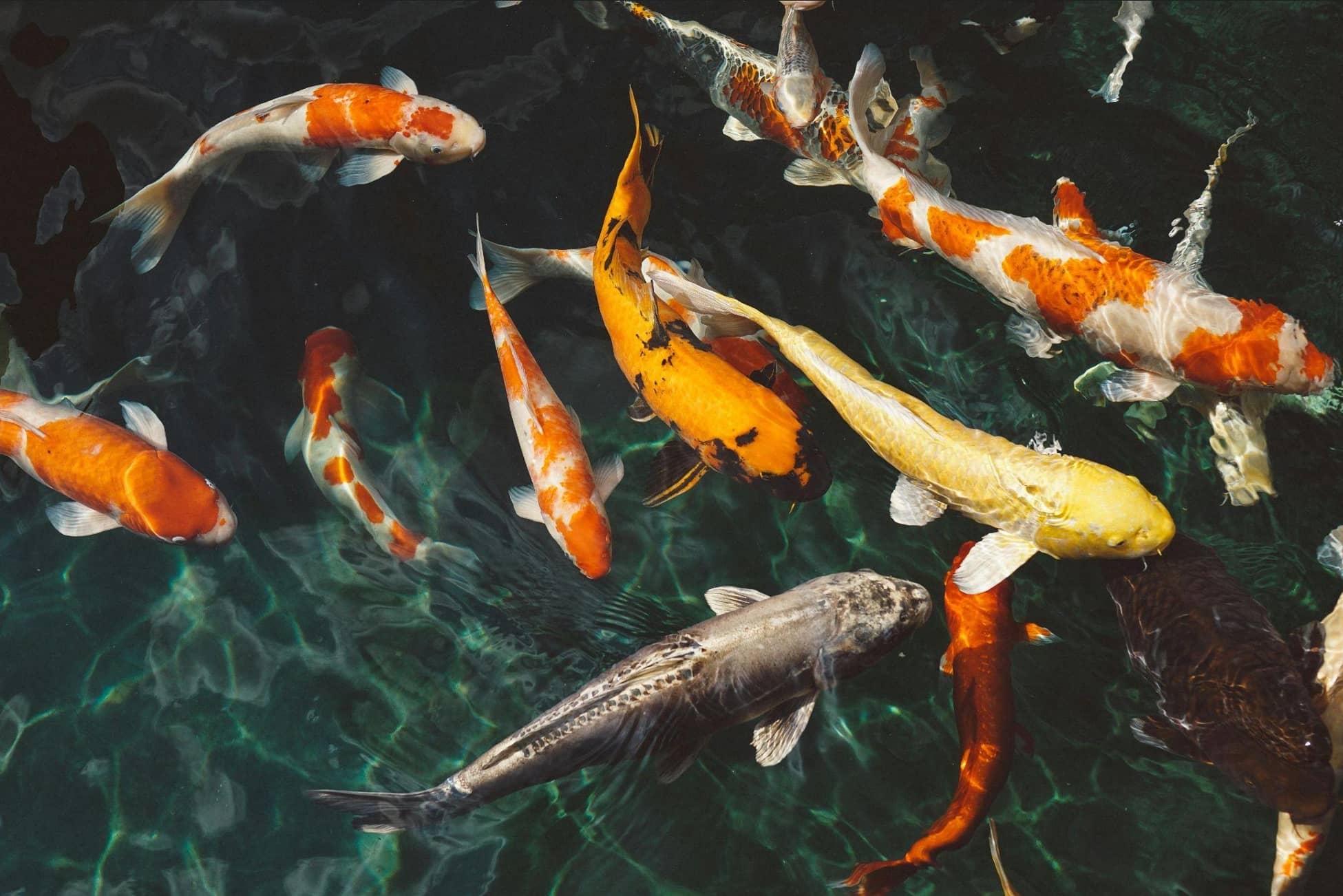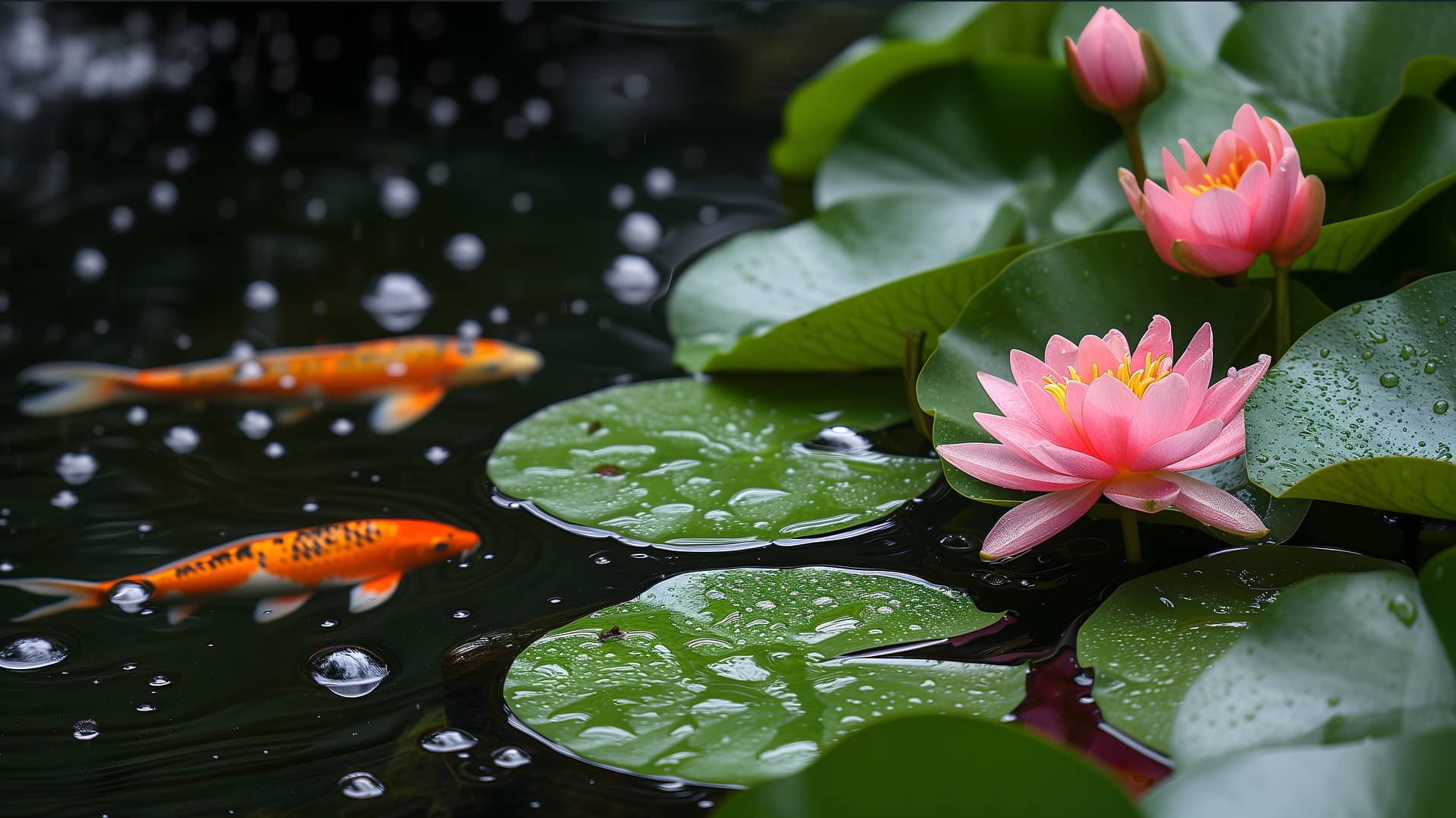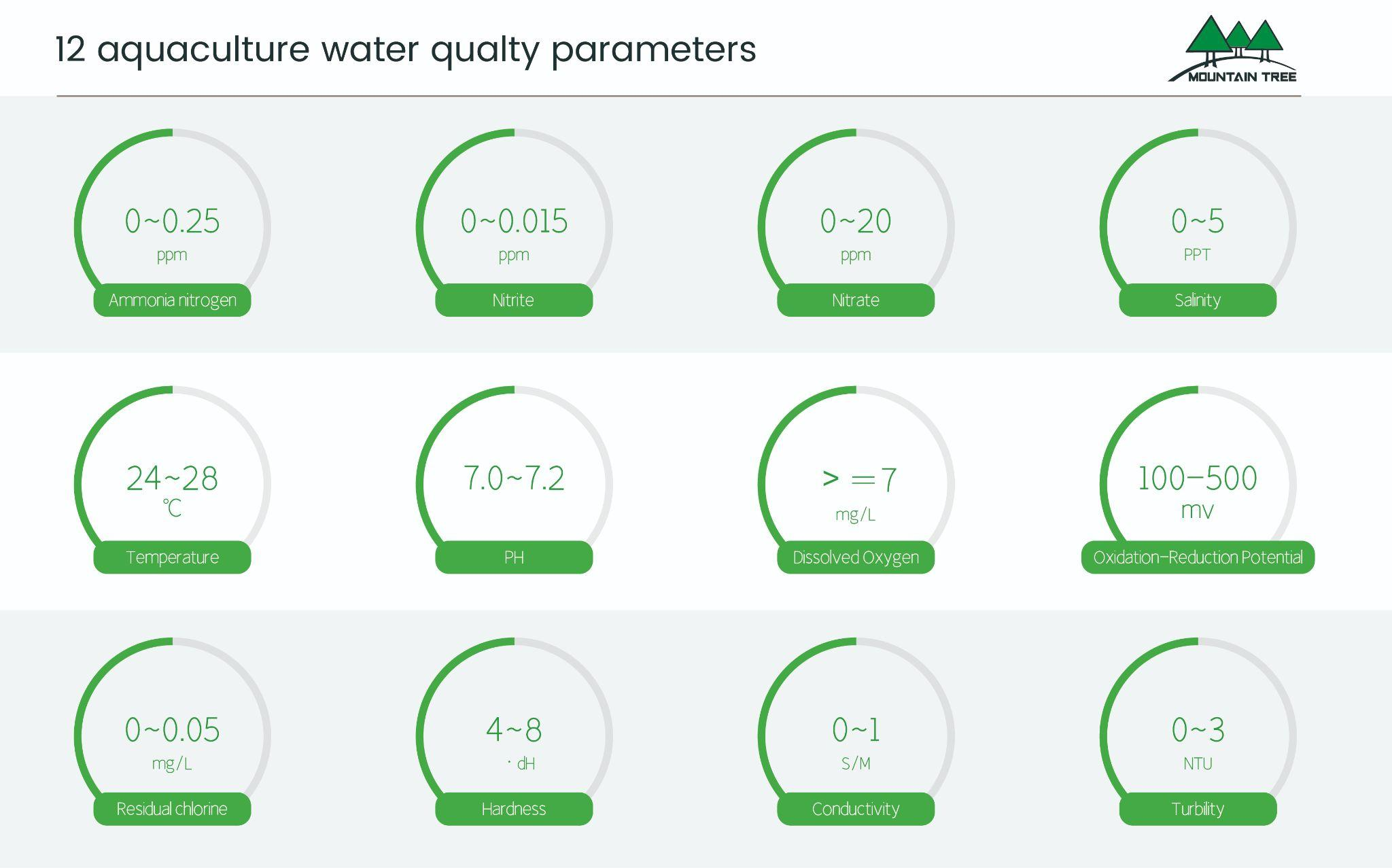
Imagine a tranquil water garden, sunlight dappling the surface, where vibrant living jewels glide effortlessly through the depths. This is exactly what you get with koi fish. So, what is the Koi fish? Let’s find out.

Koi are large, colorful fish that have been cultivated for centuries for their ornamental value. They are not a separate species, but rather a variety of Amur carp that have been meticulously bred to showcase a dazzling array of colors and patterns. These colors can range from fiery reds and oranges to tranquil blues, whites, yellows, and even black. Some koi boast intricate patterns, with black markings known as “sumi” adding depth and character to their appearance.
Koi are native to China, but have been introduced to Japan and have been artificially improved to form a variety of ornamental varieties.
The story of the koi fish begins in Asia, where they were first bred for their vibrant colors. Initially, they were raised as a food source, but over time, farmers noticed that some fish displayed unique color mutations. These colorful carp were then selectively bred, leading to the development of the stunning koi varieties we see today.
In Japanese culture, koi hold profound symbolism. They are revered for their resilience, strength, and ability to overcome challenges, often swimming upstream against strong currents. Their graceful movements in the water are seen as metaphors for navigating life’s currents with determination and perseverance. Koi are also associated with good luck, abundance, and prosperity, making them popular additions to gardens and ponds, particularly in the practice of Feng Shui.

Koi fish are known for their impressive size, often reaching lengths of 24-36 inches or more. They have a robust, torpedo-shaped body with large, flowing fins. Their most striking feature, however, is their vibrant coloration. The different varieties of koi are classified based on their color patterns and scalation. Some popular varieties include:
· Kohaku: White koi with large red markings.
· Taisho Sanke: White koi with red and black markings.
· Showa Sanshoku: Black koi with red and white markings.
· Tancho: White koi with a single red spot on the head.
· Asagi: Blue-gray koi with red markings on the belly and fins.
The appeal of keeping koi extends beyond their aesthetic and cultural significance. Many find that observing these gentle giants swimming in their ponds brings a sense of peace and tranquility. Their rhythmic movements and interactions create a mesmerizing spectacle that can soothe the soul and inspire mindfulness.
Koi are also known for their longevity. With proper care, they can live for decades, becoming cherished companions for years to come. Their resilience and ability to adapt to various environments make them a rewarding addition to any water garden. Koi are gentle and love to interact with people and can be trained to recognize their owners and even take food from their hands, adding to the interactivity and fun of the fish keeping experience.

Creating a thriving and aesthetically pleasing koi pond requires careful planning and attention to detail. A well-designed pond not only provides a beautiful habitat for your koi but also ensures their health and longevity.
The first step in creating your koi pond is choosing the type of pond that best suits your needs and space. In-ground ponds offer a more natural look and greater flexibility in size and shape. They are typically constructed using a flexible liner or a rigid preformed shell. Above-ground ponds are a good option for those with limited space or who prefer a more controlled environment. These ponds can be made from various materials, including wood, concrete, or fiberglass.
C Size: The size of your pond will depend on the number of koi you plan to raise and their potential growth. Larger ponds provide more consistent water conditions and allow more room for the koi to move around. General guidelines are listed in the table below:
Chart of the number of fish that can be kept in a 1-ton pond
| length of body | 10cm | 20cm | 30cm | 40cm | 50cm | 60cm |
| quantities | 9 | 5 | 4 | 3 | 2 | 1 |
C Shape: The shape of your pond can influence water circulation and aesthetics. Round or oval ponds promote good water flow, while irregular shapes can create a more natural look. Consider incorporating features like waterfalls, streams, or rock formations to enhance the visual appeal of your pond.
C Depth: Ideal fish pond water depth should be 1.5-1.8 meters in the south and 1.8-2.2 meters in the north.
C Materials: Choose materials that are safe for koi and durable enough to withstand the elements. Liners should be fish-safe and puncture-resistant. If using concrete or other rigid materials, ensure they are properly sealed to prevent leaks.
A robust filtration system is essential for maintaining a healthy koi pond environment. Koi are active fish and while this is great for aesthetics, it comes with a major downside. These fish produce a significant amount of waste, which can quickly degrade water quality if not properly managed. A good filtration system removes debris, neutralizes harmful substances, and promotes the growth of beneficial bacteria that help maintain water balance.
The four main stages of filtration for a koi pond are: Mechanical Filtration, Biological Filtration, Chemical Filtration, and UV Sterilization.
How to Create the Perfect Koi Pond Filter Bin
The ratio of fish pond to filtration bin is crucial for maintaining a healthy koi environment. For ponds under 30 tons, a 4:1 ratio is recommended, while ponds over 30 tons benefit from a 5:1 ratio. Generally, a larger filtration ratio is better for water quality.
Several factors influence the construction of an effective filtration system:
A well-designed filter bin, tailored to your pond’s specific needs, ensures a thriving environment for your koi while simplifying maintenance tasks.

The location of your koi pond plays a crucial role to its success. Choose a place with enough sunlight which plays a big role in Koi coloration.
Consider pond accessibility for maintenance tasks such as feeding, cleaning, and filtration system maintenance. Ensure there is ample space around the pond for easy access and maneuvering. If possible, locate the pond near a power source for running pumps and filters. Additionally, think about the surrounding environment and how the pond will integrate with your existing landscape.
Maintaining pristine water quality is the cornerstone of a thriving koi pond. While hardy, Koi fish are sensitive to changes in their aquatic environment, and neglecting water parameters can lead to stress, illness, and even death. By understanding the key water parameters and implementing regular maintenance routines, you can ensure that your koi live long, healthy lives.
The following 12 key water quality parameters are critical to the health of your koi:

Several key water parameters are critical for koi health:
To monitor and maintain optimal water quality, you need a reliable water quality testing device, such as the Mountain Tree Smart Water Quality Monitoring System, which monitors nitrate, nitrate, residual chlorine, electrical conductivity, redox reaction, nitrite, temperature, oxygen content, total hardness, salinity, turbidity, and ammonia nitrogen for a total of 12 water quality indicator parameters. Water quality is tested regularly, especially after high fish activity or heavy rainfall.
If your water parameters fall outside the ideal range, you can take steps to adjust them. For example:
| High pH | Add a pH reducer or acidic buffer. |
| Low pH | Add a pH increaser or alkaline buffer. |
| High ammonia or nitrite | Perform partial water changes and ensure that the biofiltration system is functioning properly. |
| High nitrate | Perform regular partial water changes (25% of the pond volume every week or two). |
| Temperature fluctuations | Use a pond heater in winter and a pond chiller or aerator in summer to maintain stable temperatures. |
Regular cleaning and maintenance are essential to keep your koi pond healthy. This includes:
ü Removing Debris: Skim the surface of the pond daily to remove leaves, twigs, and other debris that can decompose and affect water quality.
ü Vacuuming the Bottom: Use a pond vacuum to remove accumulated waste from the bottom of the pond.
ü Cleaning Filters: Follow the manufacturer’s instructions for cleaning and maintaining your filter system. Mechanical filters typically need to be cleaned weekly, while biological filters may only require cleaning every few months.
ü Backwashing: If your filter has a backwash feature, use it regularly to flush out accumulated debris and maintain optimal filter performance.
By diligently monitoring water parameters, making necessary adjustments, and performing regular cleaning and maintenance, you can create a pristine aquatic environment where your koi can thrive and bring you years of enjoyment.

Embarking on the journey of koi keeping is a rewarding endeavor that offers both beauty and tranquility. From meticulously designing and constructing the perfect pond to mastering the art of water quality management, every step you take contributes to the overall health and happiness of your koi.
Remember, koi are not merely pets. They are living treasures that grace your water garden with their vibrant colors, graceful movements, and calming presence. By following the principles outlined in this guide, you can create a harmonious environment where your koi thrive and flourish, bringing you years of joy and serenity.
So, embrace the art of koi keeping and embark on a journey of discovery and fulfillment.
Koi can be susceptible to various health problems, including Koi Herpes Virus (KHV), ich (white spot disease), bacterial infections, fungal infections, and parasites. Regularly monitoring your koi for signs of illness, maintaining optimal water quality, and providing a balanced diet can help prevent these issues.
Maintaining good water quality involves several steps:
· Filtration: Install a robust filtration system that includes physical filtration, biochemical filtration, water quality improvement, and sterilization of clear water.
· Regular Testing: Test water parameters (pH, ammonia, nitrite, nitrate) regularly and adjust as needed.
· Water Changes: Perform partial water changes (25% of the pond volume) every week or two to dilute harmful substances and replenish minerals.
· Cleaning: Remove debris from the pond surface and vacuum the bottom regularly.
The ideal koi pond size depends on the number of koi you plan to keep and their potential growth. A general rule of thumb is to provide at least 250 gallons of water per koi. Larger ponds offer more stable water conditions and allow for greater koi movement.
Choose high-quality koi food that is specifically formulated for their nutritional needs. Pellets are a popular choice, but flakes can also be used, especially for smaller koi. Supplement their diet with treats like live or frozen foods, fruits, and vegetables. Adjust feeding amounts based on water temperature and the size and number of koi in your pond.
Koi fish have several basic needs to thrive:
ü Clean, well-oxygenated water: Maintain optimal water quality through proper filtration and regular maintenance.
ü Adequate space: Provide enough space for your koi to swim and grow comfortably.
ü Balanced diet: Feed a high-quality diet that meets their nutritional needs.
ü Stable water temperature: Avoid sudden temperature fluctuations.
ü Protection from predators: Secure your pond with netting or fencing to protect koi from predators like birds and raccoons.
Leave a Reply